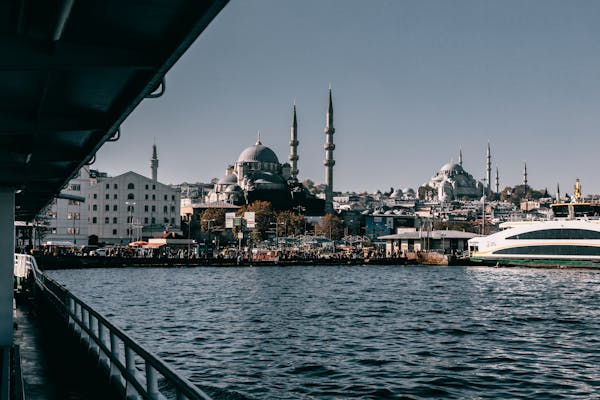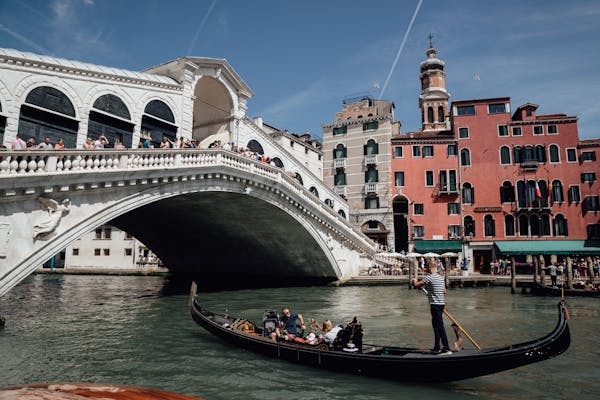DISCOVER SECTION 4 OF THE GREAT CATALAN CIRCULAR ROUTE

In a world that seems smaller every day thanks to advances in communications, talking about a Grand Tour can evoke a journey from the past, one of those trips to an unknown land undertaken by legendary explorers, now impossible on a mapped planet. a thousand and one times Nothing could be further from the truth: the Grand Tour of Catalonia a very current proposal, yes, with its doses of adventure, emotion, and discovery, a circular route through the entire principality, designed to be traveled by car in a sustainable way, which allows you to discover well-kept corners along its route on a journey full of novel experiences, all of them respectful of the environment.
Any time is good for the Catalan Grand Tour
In addition, to discover everything that awaits without the rush of the calendar and to fully live its experiences, the Grand Tour is designed to be done in five sections and at any time of the year, thus escaping from the slavery that seasonal holidays force.
In these lines, we will talk about the fourth section, which begins in La Seu d'Urgell, with its spectacular Romanesque cathedral, and ends in Figueres, a city closely linked to the universal Salvador Dalí. And since this is a mountainous section, which runs through the Pyrenees, the Sierra del Cadí, and the volcanoes of La Garrotxa, be sure that at each stop it will be easy to recharge your batteries with cheeses and sausages that will surprise you with their uniqueness and quality. together with game dishes, strong ancestral stews, and new gastronomic proposals with mountain aromas. In addition, the panoramic views, all of them great, will fascinate any self-respecting Instagrammer.
PICASSO AT THE FOOT OF PEDRAFORCA
In La Seu d'Urgell, the starting point, where the only fully Romanesque cathedral in Catalonia stands, it is mandatory to walk through the semi-porticoed streets of Major and Canonges and buy some strange cheese in one of the shops that are sheltered under its arcades. Once in the car, you soon ascend the Sierra del Cadí, passing through small mountain villages, each more evocative, such as Gòsol, whose illustrious visitors included Picasso, who in 1906 spent a season there while leaving behind his rosy and blue and hinted at cubism. By the way, the town rests at the foot of the imposing Pedraforca, with its unmistakable silhouette, a favorite destination for climbers from all over the planet.
After a walk through the Berguedà, with forests full of mushroom pickers on humid autumn mornings, he heads back towards the heart of the Pyrenees to visit Cerdanya, whose villages of stone houses, all of them presided over by old bell towers, are points starting point for hiking routes through places that change completely with each season, including Bellver de Cerdanya and Llívia , the latter surrounded by Gallic territory on all sides and proudly displaying the oldest pharmacy in Europe, or tiny towns like Alp , in Leftovers known to ski lovers. That is without talking about Puigcerdà, whose small lake has become one of his most iconic images.
SHANGRI-LA EXISTS!
A very narrow and steep road leads to Castellar de N'Hug, where the Llobregat River is born, which after a journey of 175 km empties its waters into the Mediterranean. And then he goes to Ripoll, whose monastery, steeped in history, sports a cover from the s. XIII with such a number of recorded scenes that have earned it the nickname of the "Stone Bible". Continuing to Ribes de Freser or Queralbs, the car will have to be parked to ascend to the sanctuary of Núria, a true Shangri-La in the middle of the Pyrenees, only accessible by rack railway that ascends through places not suitable for the faint-hearted; here one has the feeling of being away from everything, from absolutely everything.
From Camprodon, the next appointment of this section of the Grand Tour, with its modernist mansions, its old Pont Nou, and its famous artisan cookies, the Beget road starts, lost in the middle of the forest, the closest thing to a manger village that can be found hundreds of miles around.
SEE VOLCANOES FROM THE SKY
Continuing towards La Garrotxa, a land of volcanoes with an overwhelming telluric force, you pass through Castellfollit de la Roca, vertiginously leaning over a precipice. Once in Olot, you must visit the Garrotxa Volcanic Zone Natural Park, easily visible from the sky aboard a hot air balloon, and get lost in the Fageda d'en Jordà, a beech forest that can be discovered on foot, by bicycle or the old-fashioned way, by horse-drawn carriage. And at lunchtime, nothing better than a good plate of fesols (beans) in the nearby town of Santa Pau.
The following appointments are the Banyoles lake, with its own legend, where all kinds of water sports can be practiced, the medieval Besalú, which will transport the visitor to a time of jousting and knights, and finally, Figueres, where the surrealism of the Teatre awaits. -Museu Dalí, with its insinuating Mae West face.
A SUSTAINABLE ROUTE
After traveling this section of the Grand Tour, one will have contemplated volcanic landscapes from a bird's eye view, reached practically inaccessible places, revived a history that dates back to the Middle Ages, tasted rich mountain cuisine and succumbed to the legacy of universal artists. All this with the addition that, as these landscapes change with each season, it can be visited at different times of the year and contemplate completely different realities in each one. Of course, the traveler is only asked to, in addition to enjoying the experience to the fullest, be careful with everything that surrounds him, since maintaining the fragile ecosystem of the Fageda d'en Jordà, Cadí, or the Cerdanya meadows demands that we minimize the footprint of our passage through those pieces of ancestral beauty.


